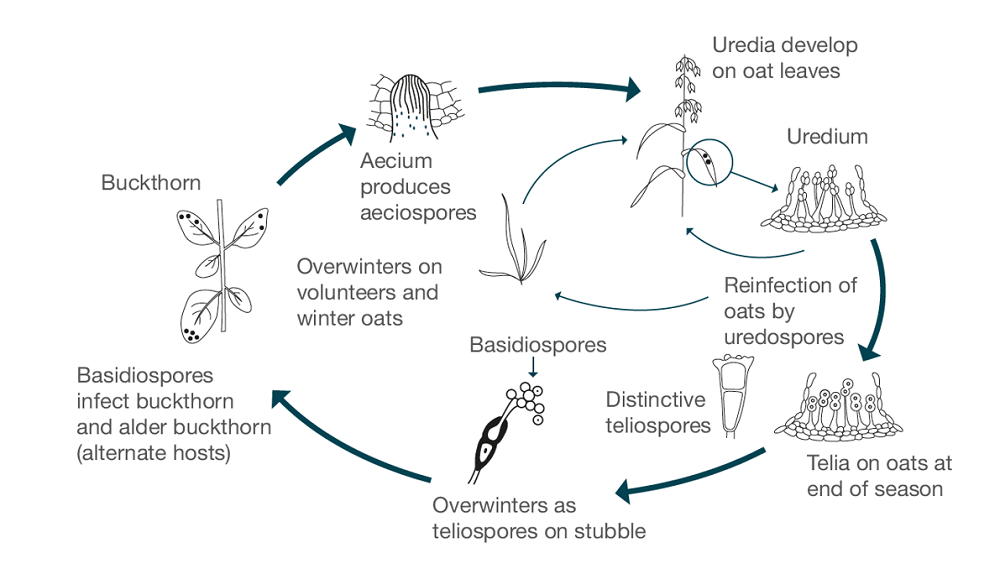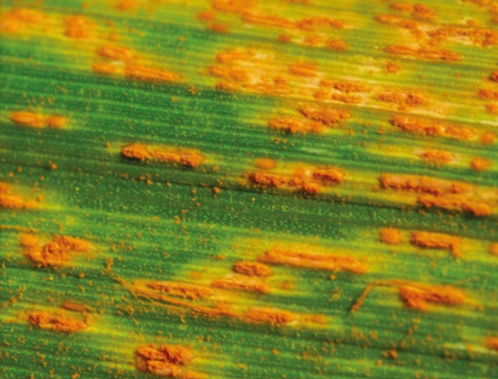Appearance and Lifecycle
Lifecycle
Crown rust is a fungal disease that is specific to oats. It is caused by the pathogen Puccinia coronata, which infects the leaves, stems, and spikes of the plant, causing yellow or orange pustules on the upper surfaces of the leaves. The spores are spread by wind or rain to infect new plants.
Once the spores have landed on the oat plant, they germinate and penetrate the plant’s cells. The fungus then begins to grow and reproduce within the plant, eventually producing new spores that can spread to other plants. Under ideal conditions the pores can form in 7-10 days from first contact. The infection can cause reduced plant growth, reduced seed yields, and decreased grain quality.

Typical Symptoms
The initial symptoms of crown rust can be very similar to that of Brown Rust in wheat and barley. The infection starts on the leaf surface with orange-brown pustules, at a later stage in the disease this can spread to the leaf sheath and oat panicle.
Management Recommendations
Key Drivers of Risk
- High Humidity
- Temperatures of around 20C
- Epidemics usually occur in the months of June and July
- Wind to transport the spores from plant to plant
To control crown rust, farmers may use resistant varieties of oats, fungicides, or crop rotation. From early flag emergence to fully emerged flag leaf is the recommended time for fungicide application.
Varietal Resistance
Crown rust is efficiently and effectively managed through the development of resistant oat varieties. Pc91 is a seedling crown rust resistance gene that is highly effective against the current P. coronata. There are several variests of cultivars that are resistance to P.coronata isolates;
- Arden
- Bohun
- Grajcar
- Konseseer
- Borowiak
- Nawigator
- Slako
- Sprinter
However, if given enough time crown rust can overcome resistance in resistant bred varieties. Appropriate control and monitoring is necessarily to aid in the prevention of further resistance.
AHDB Recommended Lists rates varietal residence on a scale of 1-9, with 1 indicating low resistance and 9 high resistance.
Cultural Control
Timely management practices such as reducing the density of the crop, controlling volunteer plants and removal if present, and removing infected plant debris can help reduce the spread of the disease. If crown rust is present and not controlled it can reduce yields up to 20%.
Monitoring
Related Links
This page is also supported by funding from The British Society for Plant Pathology (BSPP).







